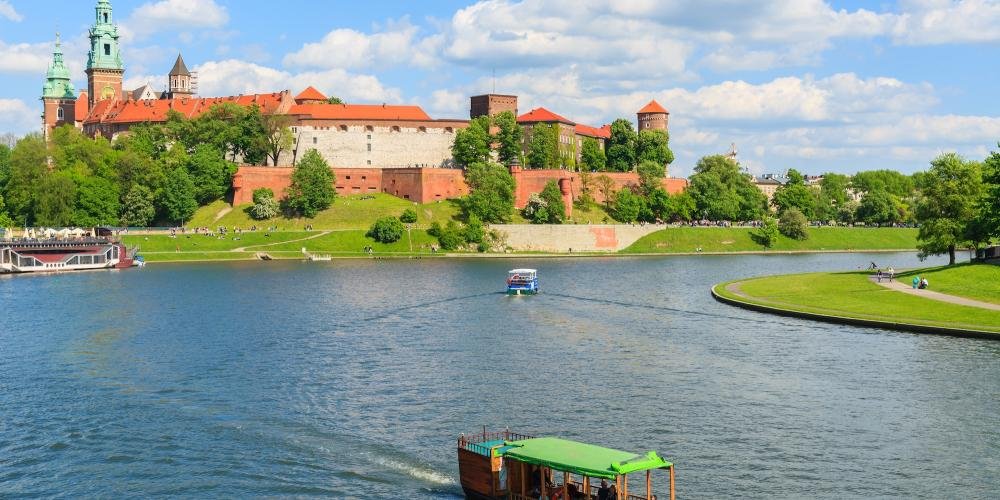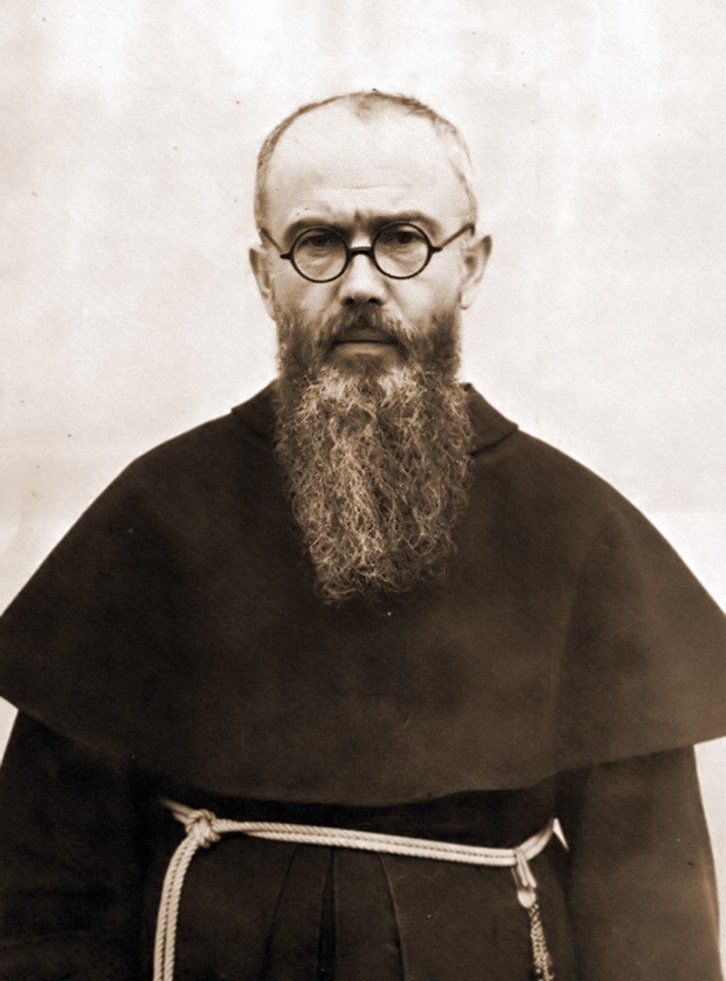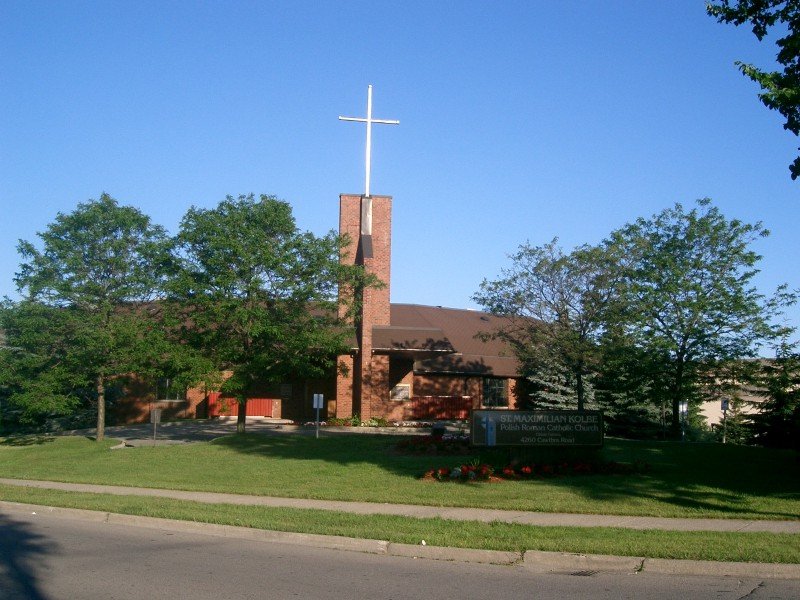The history of Polish namesakes in Mississauga
/Wawel Cathedral Architecture
I recently went on honeymoon with my husband to Southern Poland. My husband is from a small village a little over an hour outside Kraków. After spending a few relaxing days with his family in and amongst the rolling hills and farm fields, we spent quite a while in Kraków which is known for its history, architecture, food, and culture. I had heard a lot about the city from my husband, who counts it among his favourite places in the world (after Mississauga, of course). Having visited Kraków myself, I now understand why he loves it. Interestingly, the trip had me thinking about home and noticing some commonalities to place names in Mississauga, which were established by Polish immigrants.
Wawel Villa Clarkson
The Wawel Villa Retirement Home in Clarkson, which was founded by Polish immigrants in 1982, is named after the Wawel Castle in Kraków. Located at the top of Wawel Hill, the current castle is an impressive example of Medieval, Renaissance, and Baroque architecture built between the 13th and 14th centuries. It was the seat of Polish Kings for centuries when Kraków was, at one point, the country’s capital. The cathedral inside the castle walls is the final resting place for many of these monarchs, as well as many of the nation’s national heroes including Tadeusz Kościuszko, who fought in the American Revolution, was a free thinker and abolitionist, and the leader of a movement for Polish Independence. It is also the resting place of Józef Piłsudski, who was a Polish general and statesman who formed the Polish Legions and was actively involved in the fight for Independence.
Tapestries unloaded in Gdynia. Image via Wawel Castle Krakow
Tapestry in Wawel Castle
The castle itself is furnished with many tapestries, which were important for keeping the cold out. These Jagellonian tapestries were commissioned by Polish king Zygmunt August II in the 16th century and depict ancient legends, stories from the Bible, and animals, among other things. They are beautifully woven with the most decadent threads and seem to glisten. Today, they are considered national treasures. They, too, have a fascinating story that links with Canada. When the war broke out in September 1939, the tapestries were spirited out of the country to Romania, then to France, Britain and finally to Canada for safekeeping. They arrived in Canada on July 12, 1940 and were safely stored in Ottawa. After the war, however, Poland was once again taken over by a foreign power, this time Soviet Russia. Canadian authorities were reluctant to return the tapestries to Russian authorities. Canadian authorities even secretly changed the storage location several times before transferring the tapestries to Quebec Provincial Museum. After Stalin’s death in 1959, however, the tapestries began their journey back to Wawel. On January 16, 1961, the tapestries arrived in the port of Gdynia amid cheering Polish crowds.
Wisla River with Wawel Castle in the background. Image via Paweł Kazmierczak
The castle overlooks the Wisła (ENG: Vistula) River, which flows a total of 1,047 kilometres in length. It not only flows straight through Kraków, but also Sandomierz, Warsaw, Płock, Włocławek, Toruń, Bydgoszcz, Świecie, Grudziądz, Tczew and Gdańsk. So, I think I can say quite confidently that most Poles know the river quite well.
Dragon Bones Wawel Cathedral
Perhaps the most interesting legend surrounding the river is the story of the Wawel dragon or Smok Wawelski, whose bones supposedly hang above the entrance to the Wawel cathedral for good luck (though the most likely culprit of the bones are a whale or mammoth). Many variations of the Smok Wawelski story exist, but my favourite (and the one my husband tells) is that the pesky dragon under the castle was causing havoc for the people of Kraków, so King Krak issued a decree that the first one to slay the dragon would be given his daughter’s hand in marriage as payment. All the knights of the land went to slay the dragon, but even the bravest knights could not conquer the beast. One day, a peasant (some say a shepherd, others a shoemaker) tried his hand at the task. He made a stuffed sheep filled with sulfur and mustard seed and placed the bait in front of the dragon’s den. When the dragon got hungry, he swallowed it whole. However, the sulfur began to burn the dragon’s belly. He raced to the Wisła River and gorged himself, drinking as much as he possibly could. He drank and drank until finally, the Wawel dragon exploded with a loud bang. The peasant was hailed as a hero and according to some legends became the next King. I do not know exactly which variation of the legend is correct, probably all and none of them, but I do believe that this same river in which the dragon perished was the inspiration behind the name of the Polish Deli, Wisla Delicatessen, in Mississauga at Dixie and Burnhampthorpe. It is a popular spot for many Poles in Mississauga who buy fresh meats and other produce and is especially busy after church service in the nearby St. Maximilian Kolbe Church.
Wisla Delicatessen Restaurant in Mississauga
Fr.Maximilian Kolbe 1936 via Wikipedia
After the Second World War, many Poles began immigrating to Canada. By the 1970s, there was a steadily increasing Polish community in Mississauga, many of whom were veterans of the Second World War and remembered well the horrors of that time. In October 1979 when they decided to establish a Polish church in Mississauga, they decided the church would be dedicated in honour of the Blessed Maximilian Kolbe. This decision was quite ahead of its time as St. Maximilian Kolbe was only canonized in 1982 by Pope Jan Paweł II (ENG: John Paul II).
Wall of Death in Auschwitz
Kolbe was a Polish Catholic priest who was transported to Auschwitz Concentration Camp. His “crimes” against the Reich were multi-fold. He refused to sign the Deutsche Volksliste affirming his supposed German heritage, wrote anti-German publications, and hid Jewish refugees in the Niepokalanów friary. Kolbe was just one of many Poles imprisoned in the Auschwitz Concentration Camp, located in the Polish city of Oświęcim. The site would become the site of mass extermination of European Jews. To deter against escapes from the compound, the SS ordered 10 men to be starved to death. When one of those selected, Franciszek Gajowniczek, cried out for his wife and children, Kolbe volunteered to take his spot. He ministered to and prayed for the other prisoners as they all slowly died. After two weeks, only Kolbe was alive and had to be killed by lethal injection. The cell that he was kept in is underground in a dark, damp bunker. It is not pleasant even now. No photos are to be taken as it is a sacred place where many died, but in his cell stands a sacred candle placed there by Pope John Paul II. Outside the building is the so-called “Wall of Death” where many prisoners were executed. In 1980, soil was taken from the location and sprinkled on the site of what would become the St. Maximillian Kolbe Church as a reminder of Kolbe’s sacrifice. The first mass in the new church was held on December 18, 1983 and the following year, the Pope blessed the church. And what of the man Kolbe saved? Franciszek Gajowniczek went on to survive the war and return to his wife and kids and dedicated the rest of his life to spreading the story of Kolbe’s sacrifice. I am sure he would be proud of St. Maximilian Church for helping to spread his story globally.
Mississauga’s St.Maximilian church via Wikidata
It is easy for Canadians to walk past these Mississauga locales and not know of the significance behind them. Visiting Poland, I realized just how much culture and history the Polish community has brought to Mississauga, enriching our community.





















